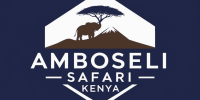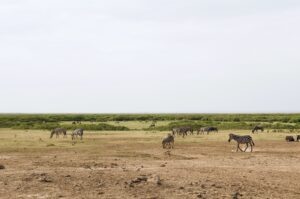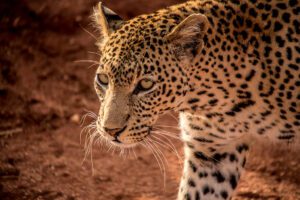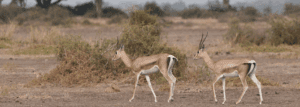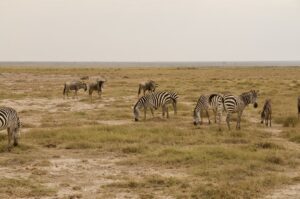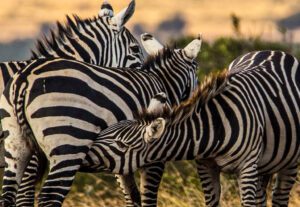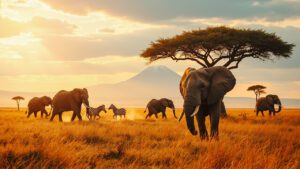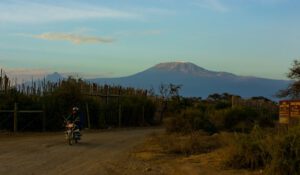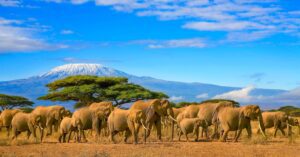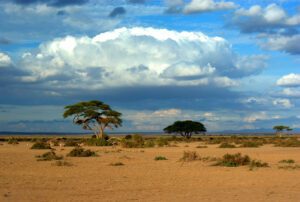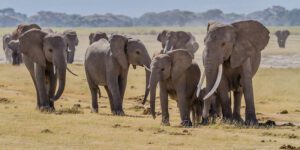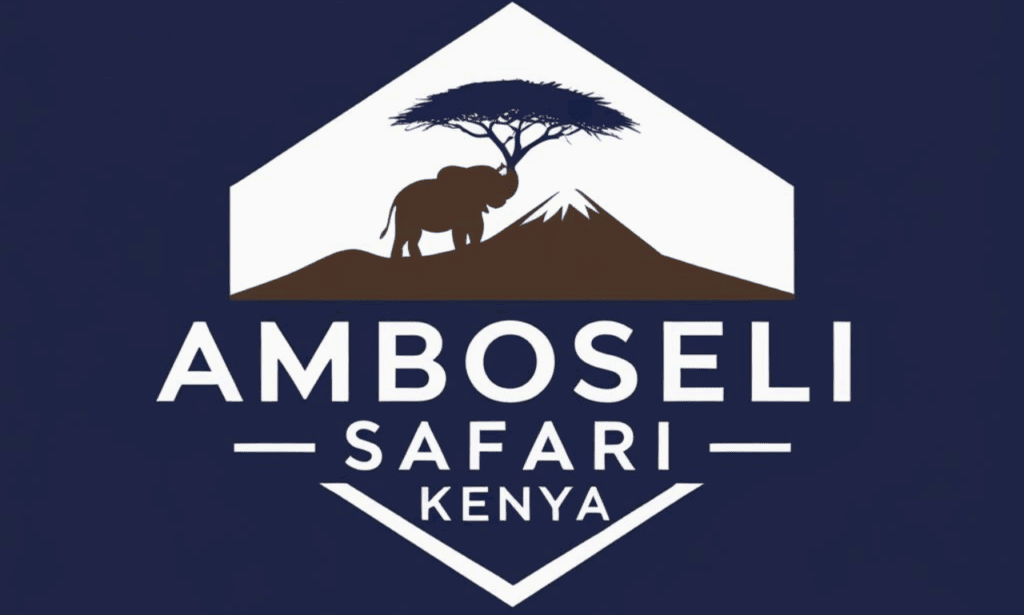What are the defining characteristics of mammals found in Amboseli?
Amboseli National Park, located in Kenya, is home to a wide array of mammals that share some defining characteristics suited to this unique environment. One key characteristic is that most of the mammals are adapted to living in a semi-arid ecosystem. This means they can handle hot temperatures during the day and cooler nights, and they’ve evolved ways to survive with relatively little water compared to more lush environments. For example, elephants, which are iconic mammals in Amboseli, can travel long distances in search of water and use their trunks like a flexible tool for drinking or spraying water to cool down. Similarly, animals like gazelles and zebras have learned to conserve water in their bodies.
Another defining characteristic of Amboseli mammals is their social behavior. Many mammals here live in groups or herds for survival. For instance, lions operate in a pride, which helps them take down larger prey like wildebeest, while zebras stick together in large numbers to confuse predators with their stripes and keep vigilant for danger.
Additionally, mammals in Amboseli are highly diverse. The park is home to herbivores, carnivores, and omnivores. There are massive mammals like elephants, which weigh several tons, as well as smaller species like aardwolves or African hares. The diversity of body sizes, diets, and behaviors ensures that they fill different roles in the ecosystem.
Lastly, a unique characteristic of many Amboseli mammals is their cohabitation with migratory patterns. Depending on the season and availability of resources like food and water, many animals such as wildebeest and zebras may migrate to other locations or into Amboseli, which provides a dynamic mammal population year-round.
In short, the mammals of Amboseli are defined by their ability to adapt, their diverse forms and roles in the ecosystem, and their social and migratory behaviors, all of which allow them to thrive in a challenging yet beautiful environment.
Which mammal species are most commonly found in Amboseli National Park?
Amboseli National Park is renowned for its elephants, and they are arguably the most famous mammal species found there. Amboseli is sometimes called “the Land of Giants” because of its large elephant population, specifically African bush elephants. These majestic creatures are frequently seen wandering the open plains, foraging for vegetation, or drinking from water holes. They are also known for their relaxed nature around humans, which makes Amboseli a prime location for elephant observation.
Besides elephants, Amboseli is home to many herbivores that are commonly spotted throughout the park. Zebras and wildebeest are often seen in large herds, grazing on grasses in the savannah. Both of these species play a big role in the ecosystem by feeding on plants and providing prey for predators. Giraffes also make frequent appearances, towering above acacia trees as they nibble on leaves. Impalas and gazelles, with their beautiful, curved horns and sleek bodies, are abundantly found and move in groups for safety from predators.
Speaking of predators, lions and hyenas are among the more commonly observed carnivores in the park. Lions, being apex predators, hunt animals like wildebeest, while spotted hyenas are opportunistic hunters and scavengers. Cheetahs and leopards are also present but are seen less often due to their elusive nature.
Smaller mammals like warthogs, monkeys, and jackals are also prevalent. Warthogs, for example, are often spotted running with their tails straight up or grazing in family groups.
In summary, the most commonly seen mammals in Amboseli include elephants, zebras, wildebeests, lions, and giraffes, along with smaller mammals like warthogs and gazelles. Together, they create a fascinating mix of wildlife that embodies the beauty of the African savannah.
What is the significance of Amboseli’s ecosystem for sustaining mammal populations?
Amboseli’s ecosystem plays a critical role in sustaining its diverse mammal populations, as it provides a balance of essential resources like water, food, and shelter. The ecosystem is unique because it combines semi-arid conditions with key water sources, such as swamps, underground springs fed by Mount Kilimanjaro, and seasonal rainfall. These water sources act as lifelines, especially in the dry season, when animals are drawn to Amboseli from neighboring areas. For instance, the presence of year-round water is vital for elephants, as they need to drink hundreds of liters of water a day to survive.
The grasslands and savannahs of Amboseli are another important feature. They support herbivores like zebras, wildebeests, and gazelles by providing them with abundant vegetation to graze on. In turn, these herbivores are prey for predators like lions, hyenas, and cheetahs. This interconnected food web ensures that no single species dominates or depletes the ecosystem, maintaining a natural balance.
The swamps in Amboseli are of special significance. Beyond quenching thirst, they provide grazing grounds, shelter against predators, and regulation of temperatures for animals such as hippos, elephants, and even bird species. These swamps act as a cradle of biodiversity, attracting not just resident mammals but also migratory ones.
Another critical aspect of Amboseli’s ecosystem is its wide-open terrain. Mammals like cheetahs, which rely on speed for hunting, thrive in these flat, open landscapes where they can sprint after prey. Likewise, animals like giraffes, which need to spot predators from a distance, benefit from the environment’s lack of dense cover.
Lastly, Amboseli’s location near Mount Kilimanjaro enhances its importance. The mountain’s snowmelt feeds the park’s water system, influencing migration patterns and supporting resources for all mammals. Without Amboseli’s unique ecosystem, many mammals wouldn’t find the necessary conditions to survive in this semi-arid region. Therefore, the park acts as both a sanctuary and a hub of interconnected lifeforms.
How do Amboseli’s mammals adapt to its semi-arid climate?
Amboseli National Park in Kenya is a semi-arid ecosystem, meaning it’s hot, dry, and doesn’t get much rain throughout the year. Despite this tough environment, the mammals living here have some pretty clever ways to survive and thrive. For starters, larger mammals like elephants are excellent at finding water. They use their incredible memory to remember old water holes, even in the driest seasons. Their trunks are also powerful tools for digging up underground water. This benefits not just themselves but other animals, too, since these water holes become drinking spots for many creatures.
Animals like zebras and antelopes have evolved to get by on grasses, even when the grass is dry and less nutritious during dry spells. Grazing animals have specialized stomachs to extract every bit of nutrition from what they eat. For example, zebras eat the rougher, hard-to-digest parts of plants that other animals might skip, while antelopes are more picky, targeting the soft and fresh bits. This reduces competition between these two species.
On the predator side, lions and cheetahs adjust their hunting to match conditions. Instead of hunting during hot days, when most animals are hiding from the sun, they are active early in the morning or late at night, when it’s cooler. Smaller nocturnal animals like jackals and hyenas also do much of their activity at night to avoid overheating.
Even sizes matter when it comes to adaptation. Animals like elephants and buffalo have large bodies that don’t lose water quickly, and they sweat minimally. Other smaller mammals, like meerkats or hares, might escape the heat entirely by staying in burrows or shaded areas. In short, life in Amboseli’s semi-arid climate is all about being resourceful and making the most of available water, food, and shade.
What are the roles of large herbivores like elephants and zebras in the Amboseli ecosystem?
Large herbivores play key roles in maintaining balance within the Amboseli ecosystem. Let’s take elephants as a prime example. Elephants are often called “ecosystem engineers” because they physically shape the environment. By knocking down trees to feed on leaves and bark, they create open spaces that turn woodlands into grasslands. This benefits grazing animals like zebras and wildebeests, which prefer open spaces to graze safely and spot predators.
Additionally, elephants are excellent seed dispersers. As they eat fruits and plants, seeds go through their digestive systems and get dropped far away in their dung (poop), often with natural fertilizer already included! This helps new plants grow, ensuring the survival of trees, bushes, and grasses across the park.
Zebras, on the other hand, are important grazers. They primarily eat tall, rough grasses, which many other animals avoid. By munching on this tough grass, zebras help trim down the vegetation and make way for tender new growth. This fresh grass can then be eaten by more selective grazers like gazelles. So, zebras essentially prepare the fields for others! It’s a bit like mowing a lawn before you plant seeds.
Furthermore, both elephants and zebras help sustain predator populations, like lions and hyenas, by simply being a food source (though not willingly!). Without these herbivores, predators would struggle to survive.
Lastly, both animals contribute to water management. Elephants dig into dry riverbeds with their trunks to find hidden water, creating drinking spots for other animals. Zebras are migratory and follow water sources, drawing other grazers along so they all gather where resources are abundant and reinforce each other’s survival.
In short, large herbivores aren’t just roaming around eating grass and plants, they’re shaping forests, supporting predator populations, and making life easier for countless smaller species.
What are the key predators among the mammals in Amboseli, and how do they hunt?
Amboseli’s top predators include lions, cheetahs, hyenas, and leopards, each of which has developed unique hunting strategies. Lions, being the largest predators, often work in groups called prides to take down big prey, such as zebras, wildebeests, or water buffalo. Working together gives them an advantage, they can use teamwork to surround and ambush their prey. For example, some lions might hide while others chase the target toward the ambushers. Lions usually hunt at night or during the cooler parts of the day, as their large bodies can overheat if they’re too active in the blazing sun.
Cheetahs are the fastest land animals and use their incredible speed to chase down prey. Unlike lions, cheetahs usually hunt alone and target smaller, more agile animals like gazelles or impalas. Their hunting style is all about stealth and bursts of speed. A cheetah will sneak up as close as possible to its prey, then sprint at speeds of up to 60–70 mph to catch it in a quick, high-energy chase. The downside? If the chase takes too long, the cheetah might give up because running that fast uses a lot of energy.
Hyenas are clever and opportunistic predators. They’ll hunt in packs for efficiency, often targeting injured, young, or sick animals. Hyenas are also scavengers, meaning they’ll eat leftovers from other predators like lions, and their strong jaws can crush bones to get to every bit of food.
Leopards, on the other hand, are solo hunters. They’re incredibly stealthy and use trees to their advantage. Leopards might spot their prey from a tree, quietly climb down, stalk it, and then pounce when the moment is right. Once they’ve caught their prey, they often drag it back up the tree to keep it safe from scavengers like hyenas.
From teamwork and speed to cunning and stealth, these predators each have masterful ways of ensuring they stay at the top of the food chain.
How do Amboseli’s mammals interact with one another within the food chain?
In Amboseli, mammals interact within a balanced food chain where every species plays a role in maintaining the ecosystem’s health. Think of the food chain as a web of “eating and being eaten.” It starts with plants, called producers, which use sunlight to make energy. Animals that eat plants, like zebras, elephants, and gazelles, are called herbivores or primary consumers. Then, there are carnivores, like lions, cheetahs, and hyenas, which eat the herbivores. At the top are apex predators, like lions, which don’t really have natural enemies.
For example, elephants eat large quantities of plants and help create clearings in the vegetation, making it easier for smaller animals to access grass and water. Zebras and wildebeest often graze together, they help each other by spotting predators and taking advantage of the best food patches (zebras eat tall grass, while wildebeests prefer short grass). These herbivores are often preyed upon by predators like lions and cheetahs. Lions work in groups called prides to take down large prey like zebras or even young elephants. Cheetahs, which are solo hunters, focus on smaller, faster animals like gazelles.
Scavengers like hyenas and jackals feed on leftover carcasses, ensuring nothing goes to waste. Even smaller mammals like mongooses and jackals help keep the system in check, they eat insects and small rodents, which balances out overpopulation of these creatures. Everything is connected. If one group disappears (say, too many herbivores are hunted by predators), it disrupts the balance. This balance is fragile, so all interactions between mammals are vital for Amboseli’s ecosystem to function properly.
What migratory patterns, if any, are observed among mammals in Amboseli?
In Amboseli, many large mammals, like elephants, wildebeest, and zebras, migrate in search of food and water. The area itself is semi-arid, meaning it has limited rainfall, so animals often move to follow the changing seasons or the availability of resources. Migration helps animals survive because they can find better grazing areas during the dry season, as well as avoid areas where food has run out.
For example, elephants, which are known for their intelligence and social behavior, migrate over long distances. They leave the park during the dry season and move to areas with more water and lush vegetation. They often return once the rainy season begins and Amboseli’s grasslands grow back. These migrations aren’t random. Elephants pass down their knowledge of routes from one generation to the next, so younger elephants learn the best paths from their elders.
Zebras and wildebeest often join together during migrations for safety, as traveling in large groups helps protect them from predators like lions. This group movement is also called the “mini-migrations” because it’s smaller than the famous Great Migration seen in Kenya’s Maasai Mara. But it’s still vital because Amboseli experiences seasonal changes that push animals to find better resources.
Even predators like lions are semi-nomadic, they follow their prey across different areas. Other mammals, like giraffes and warthogs, tend to be more stationary and rely on local food sources rather than moving long distances.
Migration in Amboseli can be affected by habitat loss or climate change. If humans block animals’ traditional migratory paths with farms or fences, or if droughts reduce available water, migrations can become disrupted. This causes problems for the entire ecosystem because animals might not survive in one area year-round without moving.
How is human activity affecting the mammal populations in Amboseli?
Human activity is putting a lot of pressure on mammal populations in Amboseli. First, let’s think about space. Amboseli may be a protected national park, but the area surrounding it is home to growing human populations. People build farms, settlements, and roads, which cut into the natural ranges where animals like elephants and zebras migrate. If elephants can’t move freely to find water and food, they might starve or clash with humans. Farmers especially have a hard time when elephants trample crops or predators attack livestock, leading to retaliation against wildlife.
Second, overgrazing by livestock is an issue. The Maasai people, who have lived near Amboseli for a long time, rely on cattle for their livelihood. But when cattle graze too much in certain areas, it leaves less food for wild herbivores like zebras, gazelles, and wildebeests. These animals might leave the area or struggle to survive, which can throw off the balance of the ecosystem.
Then, there’s tourism. Amboseli is famous for its elephants and fantastic views of Mount Kilimanjaro, so lots of tourists come here. While tourism can support conservation efforts by bringing in money, too much human activity (like vehicles driving too close to animals) can stress the wildlife. Animals might change their natural behaviors, like avoiding areas with too many people.
Lastly, climate change, driven by global human activity, is worsening droughts, which limits water and grass supply. This forces animals to move farther to survive and makes it harder for them to thrive. Some species are more vulnerable than others, leading to population decline in certain areas.
To sum up, while humans aren’t always intentionally harming mammals in Amboseli, their activities, from farming and building to tourism and climate impact, are causing struggles for the animals that live there. Conservation efforts are critical to keep Amboseli’s unique ecosystem intact.
What conservation measures are in place to protect mammals in Amboseli?
Amboseli National Park, located in Kenya, is known for its rich diversity of mammals like elephants, zebras, lions, and giraffes. Protecting these animals is critical because the park not only supports wildlife but is also a vital part of Kenya’s tourism and natural heritage. To safeguard these mammals, various conservation measures have been implemented.
One major conservation effort involves anti-poaching laws and patrols. Poaching, particularly targeting elephants for ivory, has been a significant threat. The Kenyan government, alongside organizations like the Kenya Wildlife Service (KWS), has established strict anti-poaching rules. Rangers patrol the park regularly to ensure the safety of the animals. Surveillance technologies, such as drones and camera traps, are also used to detect illegal activities and monitor the movement of species, especially elephants.
Another effective measure is habitat protection. Amboseli’s ecosystem depends on water sources like seasonal swamps, which are shared between wildlife and humans. Organizations such as the Amboseli Trust for Elephants work to maintain these habitats, ensuring that animals have access to food and water even in the dry season. They also collaborate with local communities to reduce conflicts over shared resources, like farmland and water. For instance, buffer zones have been set up around the park to create safer spaces for wildlife.
Tourism revenue plays a key role in funding conservation. Part of the fees collected from visitors goes toward projects like research, anti-poaching activities, and community development. This creates a win-win situation where protecting mammals directly benefits both the economy and the environment.
Community involvement is another core aspect. Programs have been created to educate locals about the importance of conservation. Many Maasai people, who live near the park, are now actively involved in guarding and monitoring the wildlife. These partnerships build trust and help ensure coexistence between humans and animals.
Global organizations, such as the African Wildlife Foundation, also contribute by funding conservation projects, equipping rangers, and advocating for international policies to protect endangered species. For example, they promote bans on the illegal wildlife trade and provide financial support for habitat restoration.
Conservation is an ongoing effort, but these combined measures are helping to protect Amboseli’s mammals for future generations.
How do researchers and scientists monitor and study mammal behavior in Amboseli?
Studying mammal behavior in Amboseli is crucial to understanding their needs and improving conservation efforts. Researchers and scientists use a mix of advanced technology, field observation, and long-term studies to gather insights into how the park’s mammals live and interact.
One of the main methods is direct observation in the field. Researchers spend hours observing animals like elephants, lions, or zebras to track their behavior. For example, they record how elephants form and maintain family groups or how predators like lions work together to hunt. These observations provide valuable data about social structures, feeding habits, and survival strategies.
Radio collars are another essential tool. Scientists fit certain animals, like elephants or big cats, with GPS-enabled collars to track their movements. These collars send location data in real-time, allowing researchers to map migration routes, feeding patterns, and how mammals respond to environmental changes like droughts. For instance, if elephants leave the park in search of water, researchers can see where they go and identify potential conflicts with nearby human communities.
Camera traps are also widely used. These are motion-activated cameras placed in strategic locations across the park. When an animal passes by, the camera takes a picture or video. This non-intrusive method helps researchers monitor nocturnal species (like leopards or hyenas) and gather data on animal populations without disturbing their natural behavior.
Long-term studies are particularly valuable. For example, the Amboseli Elephant Research Project has been studying elephants for decades. This project tracks individual elephants, learning about their life spans, social bonds, and how they adapt to changes in their environment. This kind of deep, ongoing research has been vital in designing conservation strategies like anti-poaching efforts or habitat restoration.
Lastly, drones and satellite imagery provide a bird’s-eye view of the ecosystem. Drones can follow animals as they move across the savannah or even locate injured or stranded individuals in need of assistance. Satellites, on the other hand, help monitor large-scale changes, such as shifts in water availability or vegetation cover.
By combining these tools and approaches, scientists gain a detailed understanding of mammal behavior. This knowledge is essential for creating policies that ensure Amboseli’s animals can thrive despite challenges like climate change and human activity.
